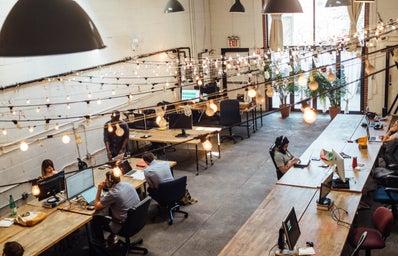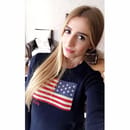When I started interning at Max Mara in the buying department, I realized although shopping for a living might sound fantastic, the job of a fashion buyer is not easy. You need a thorough understanding of your company’s brand and values, and the ability to price and negotiate.
So what does a Fashion Buyer do? A fashion buyer selects and orders the apparel and accessories that will be stocked in retail stores. As a fashion buyer, you typically specialize in a certain area such as ready-to-wear, shoes or accessories, but your job responsibilities are the same no matter which field you choose.
Lara Hauck Rotenberg, a current buyer at Max Mara, started her career at Macy’s. After that, she did buying for 5 years at Saks and she left Saks in order to learn design. She holds a design degree from Parsons which she pursued in order to have more knowledge about fitting and fabrics. “When I’m with the design team now it makes sense. I know what their needs are and where they are coming from.”, Lara says.
What category/categories of merchandise do you buy?
We buy all our Max Mara for the least shops and it is called concession and we buy several different collections within the Max Mara labels. We have the Max Mara Collection, which is ready-to-wear mainly focused on outerwear, but we also have some accessories like scarfs and belts. The really biggest portion is ready-to-wear. Then we also buy for Weekend Max Mara, where we have little bit more accessories like necklaces, gloves, and scarfs as well, but again, most of it is ready-to-wear. We also have Studio Max Mara which is again mostly ready-to-wear and half is outerwear. There are few accessories but not as much as the other two.
In what markets do you buy the merchandise?
Bloomingdales, it is the department store that we buy for in the U.S. In Canada, we buy for Holt. We have about 20-21 locations now total. The majority in Bloomingdales. We have stores on the West Coast, East Coast, Chicago, and Hawaii. In Canada, we are in Montreal and Toronto. We also buy for bloomingdales.com. We have an online account and help them with photo shoots and styling.
How do your buyers determine what to buy?
We use a lot of factors to put together the buy. One of the main tools that we use is selling recaps from previous years. We look at how styles sold before because many times we have repeated styles the following year or something that’s similar. So we are looking at selling, we look at sales volume and also sales units. In addition to that, we also look at our end of season recaps. We send out recaps to all of our stores to get all of the necessary feedback. It is a great opportunity for us to discover more because we may miss something with numbers. Maybe a store was in construction and their loyal customers didn’t come. Demographics may have changed. So all of these things we get the through the recap.
How often do you buy? How far ahead of the retail selling season?
We buy in a year in advance. Right now we are buying Fall/Winter ‘17 Exit 2, which is like our winter delivery basically. And our Fall/Winter 16 delivery is on the floor right now. So it is about a year in advance. We also have to be good at predicting what is going to be in the following year. For example, this year because we have had a lot of warm weather. This is why we are taking this into consideration while buying. We have 4 different markets. 4 times a year we go to Italy.
Does your opinion alone determine what to buy? How many others are consulted?
First, we go to Italy as a buying team and we get their perspective. We work with the design team on what is the new fabric and what is more trendy for the season. We really have to focus on that. What is the key look? What is the advertisement? So first we have to decide what is most important. Then we come back and try to balance what can we sell in the US. It is all about the balance. Store knowledge is also very important as we are working with them closely, so we know what will sell and what won’t. Store manager reports are important too. Every Monday we team up with regional New York team about these reports. We walk through the collection with them to see if there is any final call. That is why we really work closely with them.
What are the major advantages and disadvantages of your job?
Advantages: We are in control of buying. We are experts in products.
Disadvantages: To give Italy what they need is difficult because we are not at the department store level.
What career advice do you have for fashion merchandising students?
Internships are very important. You are getting a great experience. Of course getting an education in class is important as well, but being in this environment can help you a lot in the future. You can see what it is really like to be a buyer on daily basis and what their tasks are.


